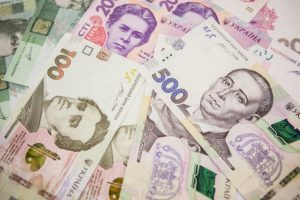
Ukrainian business has worsened expectations regarding a slowdown in inflation over the next 12 months to 7% from 5.1% in the middle of the year and the weakening of the hryvnia exchange rate to UAH 28.28/$1 from UAH 26.01/$1.
According to the results of a regular quarterly survey of business expectations of enterprises, conducted by the National Bank of Ukraine (NBU) from May 4 to June 4 this year, businesses more restrainedly expected an increase in production of goods and services in Ukraine in the next 12 months. Thus, almost 34.1% (10.4% a quarter earlier) of respondents expected a decrease in this indicator.
According to the survey, the business activity of Ukrainian enterprises decreased to the lowest index of business expectations since 2015 for the next 12 months, to 90.8% from 110.5% a quarter earlier.
It is noted that a decline in business activity is expected by enterprises of all types and areas of activity.
The poll shows that most companies do not expect changes in their financial and economic situation in the next 12 months, 22% of companies expect deterioration. The regulator noted that representatives of small and medium-sized businesses have more pessimistic assessments.
According to the report, the business expects a decrease in the total volume of sales of products, including in the external market. In general, growth in this indicator is predicted only by respondents from processing industry and trade, and the lowest estimates are in construction and mining enterprises.
According to the survey, for the third quarter in a row, the share of companies that predict a decrease in the number of employees at their enterprises has increased. In particular, the share of enterprises planning to cut staff in the next 12 months increased to 26.3% from 21% a quarter earlier. The respondents are pessimistic in all types of economic activity, except for construction, where the number of employees is predicted to remain unchanged.
At the same time, the number of companies planning to raise wages for their employees has significantly decreased over the next 12 months, to 36.5% from 63.4%.
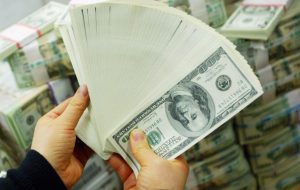
The total government debt of Ukraine in March 2020 decreased by 3.62% in dollar terms, to $80.38 billion, and in the hryvnia it increased by 10.15% and amounted to UAH 2.255 trillion, the Ministry of Finance has reported. According to the Ministry of Finance, direct public debt in March this year in dollar terms decreased by 3.71%, to $70.87 billion, while in hryvnias it grew by 9.98%, to UAH 1.988 trillion. In particular, external direct debt in March decreased by 0.4%, to $40.34 billion.
State-guaranteed debt last month increased by 11.33%, to UAH 266.7 billion, in dollars decreased by 2.96%, to $9.51 billion. In particular, external debt fell by 11.23%, to UAH 255.83 billion, in dollars it external guaranteed debt decreased by 2.98%, to $9.12 billion.
Since the beginning of the year, the total public debt decreased by almost 4% in dollar terms and increased by 8.4% in hryvnias, according to the ministry.
As reported, the total and state debt of Ukraine in February decreased due to the weakening of the hryvnia by 1.46% in hryvnias and by 0.02% in dollar terms.
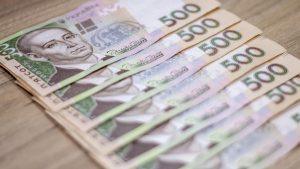
Вefore the introduction of quarantine due to the spread of the coronavirus disease (COVID-19) Ukrainian business improved its expectations regarding the slowdown in inflation in the next 12 months to 5.1% from 7% early this year and the strengthening of the hryvnia to UAH 26.01/$1 from UAH 27.43/$1.
According to the quarterly business outlook survey conducted by the National Bank of Ukraine (NBU) from February 4 through March 4, 2020, business was more restrained in expecting growth in production of goods and services in Ukraine in the next 12 months. Thus, almost 30.8% (37.6% a quarter earlier) of respondents expected an increase in this indicator, another 48.7% (45.5%) believed that they would remain at the same level.
According to the survey, business activity of Ukrainian enterprises decreased to a moderate level amid a reduction in the Business Outlook Index (BOI) for the next 12 months to 110.5% from 112% a quarter earlier.
The decrease in BOI was insignificant due to high business estimates for the total sales of own-produced products, investment costs for machinery, equipment and inventory, as well as the financial and economic condition of enterprises.
According to the survey, the share of companies expecting improvement in their financial and economic condition over the next 12 months fell to 27.6% from 28% the previous quarter, while those forecasting deterioration increased to 10.8% from about 10%. The regulator said that all surveyed enterprises, except for the water supply sector, had optimistic forecasts, and the mining industry had the most optimistic forecasts.
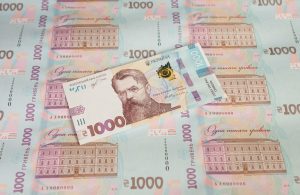
Ukrainian banks in the fourth quarter of 2019 reduced interest rates on hryvnia loans for businesses by 2.4 percentage points (p.p.), to 15.7% per annum, following a reduction in the refinancing rate by the National Bank of Ukraine (NBU). According to the banking sector survey posted on the National Bank’s website, the reduction in the cost of hryvnia loans for individuals was less noticeable: in the fourth quarter of 2019 the rates fell by 0.5 percentage points, to 33.6% per annum.
At the same time, according to the document, the rates on foreign currency loans to business entities are at a historically low level of 4.6% in December 2019.
The report also notes that the rates on deposits of individuals began to decline only in December, following the reduction in rates by state banks.
“During the year, state banks kept deposit rates at a high level due to inertia in the management of liabilities and assets and legal risks of PrivatBank,” the document says.
So, according to the report, the value of 12-month hryvnia deposits of individuals in the fourth quarter of 2019 decreased by 0.7 percentage points, to 15.1% per annum, in January 2020 it continued to decline by 1.1 percentage points, and in the first week of February by another 1 percentage point, to 13% per annum.
At the same time, the value of 12-month household deposits in U.S. dollars for the fourth quarter of 2019 decreased by 0.6 percentage points, to 2.6% per annum, and in 2020 by another 0.7 percentage points.
In addition, according to the document, the cost of hryvnia funds of corporations during the fourth quarter of 2019 fell by 2.7 percentage points, to 10.3% per annum.
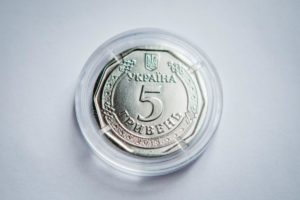
The National Bank of Ukraine (NBU) on December 20 introduced into circulation the upgraded 50-hryvnia bills, as well as 5-hryvnia coins that will gradually replace the respective banknotes, the NBU has reported on its website.
According to the report, first of all, the NBU intends to introduce 5 million of 50–hryvnia banknotes and 5-hryvnia coins. The first batch of means of payment had already been distributed to NBU regional offices.
The NBU has catered to the needs of the public, since customers will not be required to exchange the current 5- and 50-hryvnia bills for new coins and banknotes. No time limits will be imposed on the simultaneous use of new and previous banknotes in payments.
The 5- and 50-hryvnia banknotes of the previous design will be gradually replaced with coins and new banknotes as they wear out. The number of upgraded bills and coins will gradually increase in circulation, depending on the economy’s needs, the bank said.
The NBU said that the introduction of into circulation the upgraded 50-hryvnia bills and 5-hryvnia coins is a part of optimizing and upgrading the banknote and coin series of hryvnia.
Since 2014, the NBU has been upgrading the hryvnia and streamlining cash settlements. Optimization of the banknote and coin series of hryvnia is expected to be completed in 2020 after 200-hryvnia banknotes are introduced into circulation alongside 10-hryvnia coins. Due to comprehensive changes, eventually, the hryvnia series will be optimized to 12 denominations. The new denomination series will have six coins (10 and 50 kopiikas, and 1, 2, 5, and 10 hryvnias) and six banknote denominations (20, 50, 100, 200, 500, and 1,000 hryvnias).
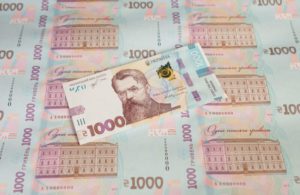
The National Bank of Ukraine (NBU) on October 25, 2019 put into circulation the 1,000-hryvnia banknote, the NBU has reported on its website.
“From today, banks will be able to get it at the National Bank and give it out to their customers. This banknote is now a valid means of payment in Ukraine. It can be freely used to pay in a retail network or make a deposit with a bank,” the press service of the governor of the central bank said, citing Yakiv Smolii.
According to him, the key advantages of putting into circulation the new banknote with a face value of UAH 1,000 are an increase in the convenience of payments and a reduction in the cost of producing and processing banknotes. The 1,000-hryvnia banknote replaces in circulation some of the banknotes with a face value of UAH 100, 200 and 500. In addition, the appearance of the new banknote will simplify payments and savings.
As the central bank said, the last time the highest face value banknote – UAH 500 UAH was put into circulation 13 years ago. At the same time, Ukrainians’ incomes are rising, prices are changing, therefore, according to theoretical studies used to determine the optimal banknote number by the central banks of the world, to ensure normal money circulation in Ukraine, banknotes of a higher face value than UAH 500 are needed.
According to the press service, the new banknote combines advanced design and money security technologies.
“The 1,000-hryvnia banknote is the highest face value our national currency has today. It is therefore well protected. This banknote contains more than 20 modern security elements, including two modern optically variable elements. Everyone can independently verify its authenticity,” Smolii said.
So, turning the banknote in your hands, you can easily check its modern security element – the SPARK OVI element in the form of a crystal flower, which should gradually change color – from golden to jade green. Another innovative security feature is the “window” thread. This partially embedded in the paper purple polymer thread contains the digits representing the banknote’s face value and the trident – the small coat of arms of Ukraine. Tilting of the banknote brings out the kinematic effect, the background image moves in the opposite direction.
The front of the banknote features a portrait of Volodymyr Vernadskyi, an outstanding scientist, one of the founders and the first president of the Ukrainian Academy of Sciences, created in 1918. The building of the Presidium of the National Academy of Sciences of Ukraine is at the back of the banknote.
The 1,000-hryvnia banknote inherits the new modernized design of the upgraded 20, 100 and 500 hryvnia banknotes.